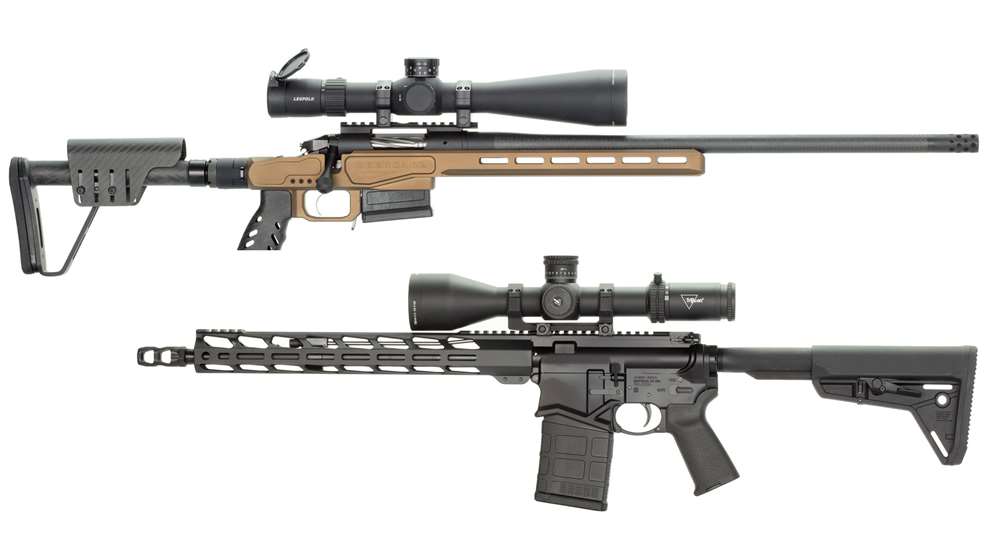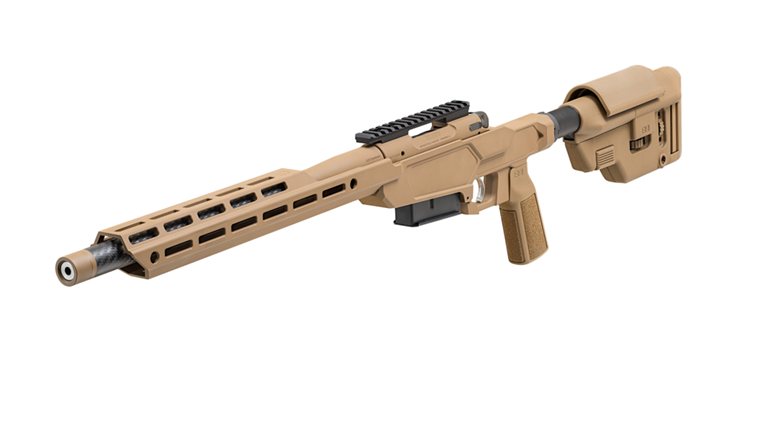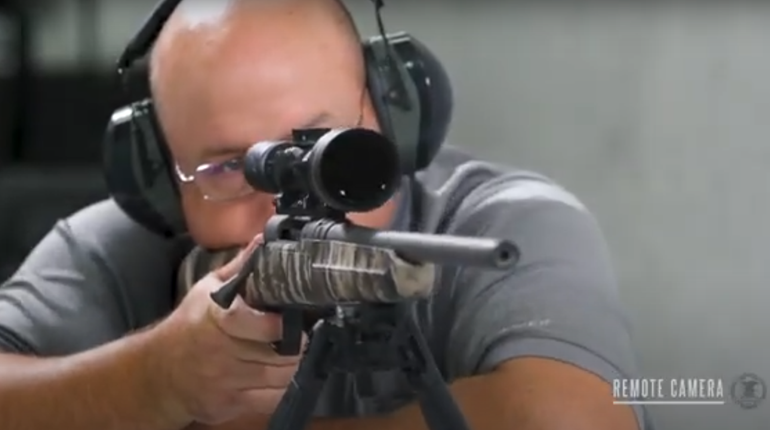
The fiery passions that fuel certain gun debates can burn over the course of several generations. The “9 mm vs. Anything That Starts With 4” battle is a prime example, having taken more than a century for each side to retreat to their respective corners, frowny faces and all. Other arguments, such as the best expanding bullet or long-range cartridge, will continue to morph as new capabilities replace old hamstrings. A few subjects are considered to be long-settled, like the notion that the bolt-action is the king of repeating-rifle accuracy. While this statement is borne out in practice, it isn’t for the reasons usually given.
Conventional wisdom says that semi-automatics play second fiddle because their moving parts make them harder to shoot accurately. It’s true that early semi-autos with heavy operating components, recoiling barrels or complicated locking systems were hard to handle with full-power cartridges. Later designs that rely on components reciprocating alongside barrels, while projectiles are still in bores, affect the all-important vibration patterns of barrels. To top it off, the non-freefloat barrels and heavy triggers of mid-20th century semi-auto designs all but ensure mediocre performance downrange.
Thankfully, the reduced moving masses, longer gas pathways and accuracy enhancements in modern, direct-impingement-operated semi-autos allow for potential accuracy that was unheard of—even in bolt-action rifles—a couple short decades ago. If adjustable gas is present, the “moving-parts” theory is easily tested by shooting a series of comparison groups with the gas system turned both on and off. When testing with the same ammunition, rifle, optic and conditions, my experience is that differences due to semi-auto cycling are negligible. My most recent comparison resulted in hand-cycled, 6.5 Grendel groups that averaged .12-MOA larger than when fired semi-auto in the same rifle. Sometimes it’s the other way around, but always within the margins of my own error.
The “problem” with modern semi-automatic accuracy has less to do with component movement than actual receiver designs. Most bolt-actions are made from some form of steel. A few makers use titanium alloys for mountain-type rifles, but steels are preferred for strength, durability, cost and ease of machining. Conversely, most modern semi-autos are housed in aluminum-alloy receivers in order to keep weight and cost down. If all else is equal, these lighter alloys can be expected to flex more under the same stress loads. The more receivers flex, the less consistent they are, which reduces potential accuracy.
To help understand measurements of material rigidity, I enlisted the brain and experience of an Instructor of Metallurgy at Central Carolina Community College in Sanford, NC: Dr. Chris Jackson, Ph.D. He’s also a fellow gunsmith and manufacturer of firearms through his company, Actual Innovations. Jackson was kind enough to talk to me in terms that even an old infantryman could understand.
He explained that different moduli are used to express the degrees to which materials can be compressed or stretched before they reach their tensile strengths and begin to fail. Young’s Modulus of Elasticity expresses these values in psi. For example, engineeringtoolbox.com shows that when using Young’s Modulus to gauge flexibility and resilience to stress, aluminum alloy can withstand 10.1 million psi. Titanium alloy averages 16.3 million psi, while stainless steel holds out until 26.1 million psi. Common carbon steels are even stronger at around 29 million psi. Therefore, if identical receiver designs are used for comparison, the higher the Young’s Modulus value associated with a material, the less it should flex under the stress of firing.
Jackson also reminded me that some metals handle heat better than others, which affects how they react under stress. Given how quickly aluminum heats up, my little pea-brain deduces that if the same amount of heat from a barrel’s chamber is applied to aluminum and steel receivers of equal design and dimension, the aluminum model will flex more.
If material was the only factor in play, we’d likely see refined versions of the M1A, FAL, AK and H&K roller-locked rifles dominating precision-rifle-competition matches today. Unfortunately, the same gaping cutouts that accommodate box magazines, trigger assemblies and reciprocating-bolt parts in modern, boxy semi-auto receivers come with additional baggage. When compared with compact, thick-walled, bolt-action receivers that have smaller ejection and feeding ports, semi-auto receivers use less-rigid designs.
We can do an apple-to-apple comparison of receiver rigidities by looking at two bolt-action extremes. The first are among the most rigid: Benchrest-rifle-competition actions. The results of their tiny ejection ports and minimal bottom-feed cutouts (if any) can be seen in BR match rankings. Winning five-shot group aggregates typically measure less than .2 inches (center to center) at 100 yards. Scores greater than .3 inch won’t even place you in the top 20 of a typical match.
The late-World War II Enfield SMLE No. 5 sits at the opposite end of the spectrum. Per historicalfirearms.info, the No. 5’s lightened receiver, shorter barrel and reduced stock made it 2 pounds lighter than its predecessor. However, these so-called “jungle carbines” were plagued by wandering zeros. Once their weakened, flexing receivers were found to be the culprits, the No. 5s were discontinued.
Designs notwithstanding, I’ve tested, built and used enough sub-.5-MOA semi-automatics to be a firm believer in their ability to get the job done. However, I cannot deny that I get away with more shooting errors when using finely tuned, bolt-action rifles. That tells me the turnbolt’s receiver design has an inherent edge. I’d love to find an affordable, steel-framed Turnbull TAR-15 to use for comparison testing against 7075-T6 aluminum AR receivers, but those pretty rifles are rarer than reporters who understand firearms—or the Second Amendment.
If someone ever figures out how to make a full-caliber semi-automatic with the same rigidity as a bolt action, complete with freefloat barrel and good trigger, that could change things—especially if it doesn’t double the weight of current models. In the meantime, the weight-conscious utilitarian within me will continue to overrule the group-chasing perfectionist as I grab my aluminum-framed, split-receiver semi-auto for any immediate needs. It shoots better than I do, anyway.





































